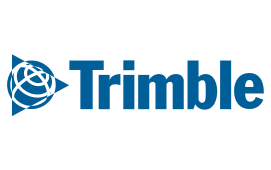Estimating Feeders
What would you say if I told you feeders are actually one of the easier systems to estimate? I wouldn't be surprised if you didn't believe me. There's something very daunting about starting at a single-line riser diagram. However, determining the distance between two points is really all there is to estimating feeders. Where's the difficult part? Well, those two points are rarely a simple, straight line.
There's a variety of different kinds of feeders, and you'll find them in almost every system. A different set of things to consider comes with each system. One example would be the different voltages that power feeders have: high (21 kV and up), medium (600V to 15 kV), and low (120V to 600V). Each of these voltage sizes comes with different termination and cable considerations. The considerations for medium and high voltages are very different than those of the low voltages, in both labor time and material costs. Signal feeders with low-voltage have basically the same considerations for conduits, but the terminations and cabling vary greatly.
Cables and terminations are just the start, though. Also to be considered are some other very important and potentially costly details the occur from points A and B.
Wherever you route them, there should be no conflicts or obstructions along the way. You must make sure you choose the routing that allows your conduit - or several conduits - to be installed. In the case that there are obstructions, you'll need to determine ways around them. This may call for some large pull-boxes, bends, elbows, several extra fittings, and possibly some concrete core drilling.
Something that's not always a straight shot are overhead runs. They usually have to be concealed above the ceiling or installed in an unseen location, such as an attic, basement, or utility tunnel. They also often have to run down corridors loaded with the conduits of other various trades. This is especially true with large HVAC ducts.
Under-slab and underground runs have pretty much the same considerations, but you normally have things to avoid, such as trees, utility conduits, trees, piping, roadways, 4-foot thick concrete footings, walls, etc. It's also crucial to know whether your conduits need to be concrete encased and exactly how deep the conduits should be buried.
There will be times the best route, or possibly even the only route, is a combination - underground, under-slab, and overhead. Herein lies another level of complexity you will have to consider - your transitions into and out of the ground/slab and how you will get up and down from the ceiling levels.
Think Support
Of the many methods there are to support conduit, a few of them are one- and two-whole straps, J-hooks, caddy clips, slick-rods, and other kinds of other National Electrical Code-approved methods. Typically, "strut" trapeze and wall racks can share the same supports.
It's critical to read over the specifications on supporting methods and hangars. Why? Because where, when, how many, spacing, rod size and length, seismic bracing, and how you will attach them to the structure (welding, anchors, beam clamps) must be determined.
How many cables and conduits does a feeder have? Something that often run in multiple or parallel conduit runs is your larger amperage sizes (typically 400+). The result of this is that a single feeder can have two, three, four, or even more conduits and sets of cables. What does this mean? At least double the amount of fittings, bends, cores, elbows, bigger pull-boxes, and likely more supports. Believe me when I tell you that you don't want to miss the indicator informing you there are eight sets of 4-inch with 500 mcm and 2/0...and your boss doesn't want you to miss this either.
Wire Type
Being aware of your wire specification is something you can't afford to skip. Is your wire made of aluminum or copper? There is a huge material and labor cost difference that can make the difference between you winning or losing a bid. Wire insulation can also be an added expense. What kind of wire are we working with? IS its THHN, XHHW, or a more costly kind such as mineral insulated? Refer to NEC Article 695 for fire pump feeder requirements.
Is there a possibility that conduit and wire isn't even required? Is MC cable allowed? If it is allowed, consider how it will be supported and if there are any restrictions to using MC cable.
Due to the fact that the wire extends beyond the conduit and into the enclosures, more than just wiring the conduit is needed. For years, I have used the standard of 10 feet at big boards and 5 feet at panels and J-boxes. However, you'll want to be careful with large vaults and manholes since they may require a full loop.
In addition to what we've already discussed, there are a few more things to consider when estimating feeders. A few are distance and voltage drop, derating, junction boxes vs. 90s, sizing junction boxes, bends, conduits, connectors, grounding, grounding bushings cable racking in vaults and manholes, and terminations that happen at the end of each run. These are just a few, though.
All this said, I've barely scratched the surface on estimating feeders; I've just given you some things to think about. Though I mentioned feeders are "easy" and "fast" to take off, this doesn't mean there's anything casual about feeders. Until you master this critical estimating task, be sure you have a full understanding of all you are dealing with and continue to learn everything you can about each and every feeder on the job.
Charter Estimating is a professional electrical and pre-construction estimating company that offers long term and short-term estimating solutions for contractors around the nation. Whether you are looking for part-time, full-time, or more than one estimator, we are always here to help you further your company’s goals. Get in touch with us today!

Contact Us
Schedule a Consultation
(*) - Required field
Our Partners




